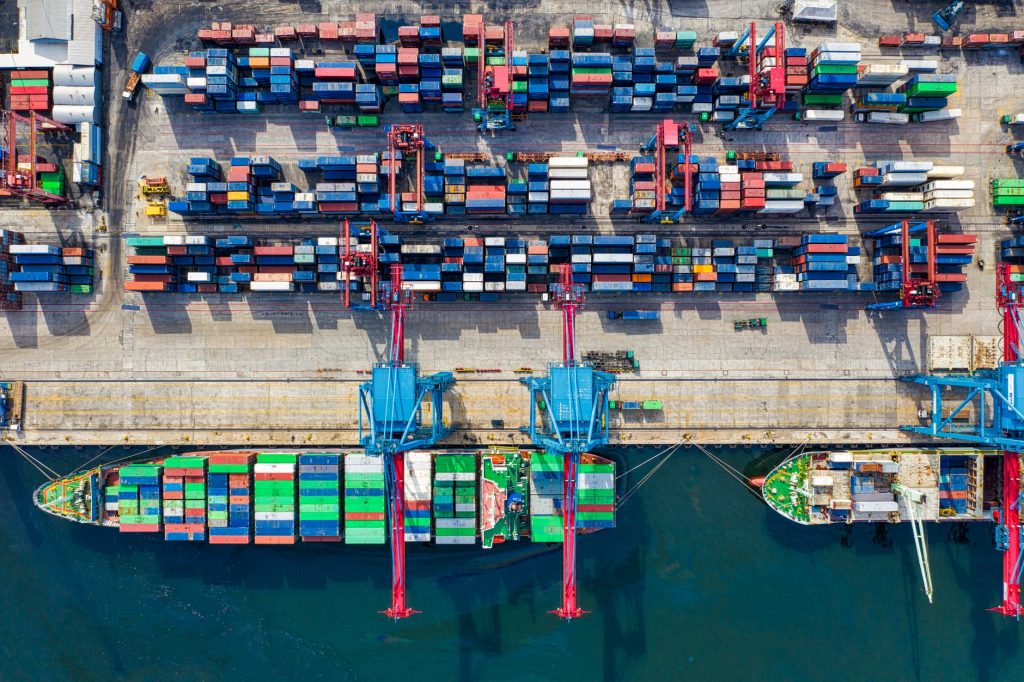Sibos 2024: Oiling the wheels of trade with digitalisation
From cross-border payments to blockchain-based financing, digitalisation is driving sweeping changes throughout the global trade ecosystem.

Digitalisation is driving sweeping changes throughout the global trade ecosystem
Leading experts discussed the role of digital payments, trade finance innovation, and new market ecosystems at a panel held during Sibos 2024 in Beijing, China last week.
The role of digital payments in reshaping trade
Digital payments are not just facilitating transactions — they are redefining how countries position themselves within the global trade network, according to Deya Innab, Deputy CEO of Eastnets, a provider of compliance and payment solutions for the financial services sector.
“Countries with advanced digital payment infrastructure can streamline cross-border payments, cut costs, and improve transparency,” she explained. “WTO studies show that payment digitisation alone can improve trade efficiency by 20-25%.”
As a result, smaller economies in Africa, Southeast Asia, and the Middle East are already leveraging these systems to compete in global markets.
In her talk, Innab also touched on efforts to explore alternative payment networks in the Asia-Pacific (APAC) region to reduce reliance on the US dollar.
“The dominance of the US dollar and its connection to Swift creates significant power for the US,” she noted.
This is encouraging a shift towards other payment networks, like China’s digital yuan, as part of its Belt and Road Initiative.
While this multipolar trade network increases resilience, she warned that it might also lead to trade fragmentation and may potentially aggravate risks due to varying regulatory maturity in different countries.
Big corporates vs SMEs
The impact of trade digitalisation differs sharply between large corporations and small- and medium-sized enterprises (SMEs), said Terence Yew Tiek Yong, Managing Director of DBS Bank.
“In large-cap international trade, we’ve seen live use cases where blockchain-based solutions and electronic bills of lading are used to facilitate trade between unexpected partners,” he said.
As an example, he said Singaporean banks once took part in a deal to intermediate trade between Brazil and India. “And we financed it from Singapore. There is also North-South trade as well, say, from Australia to China,” Yong added.
However, these solutions are occasionally held back by limitations such as closed ecosystems and high-value transactions.
“Meanwhile, SMEs are focused on payment digitalisation,” Yong continued. “Payment service providers and fintechs are making cross-border transactions faster and more cost-effective for SMEs, but there’s still a gap between trade finance for big corporates and what’s available to smaller players.”
Addressing friction in trade finance and payments
Carlota Sustacha, Global Head of Enterprise Financing Solutions at BBVA, outlined efforts to reduce the persistent friction in cross-border payments and trade finance.
“We’ve seen improvements with Swift’s initiatives, like Swift Go and Swift GPI, which enhance the speed, cost efficiency, and transparency of smaller transactions,” she said.
However, the trade finance landscape remains complex, particularly for larger corporate transactions that involve unfamiliar counterparties and conditional payments.
“There’s still a heavy reliance on paper-based documentation in trade finance,” Innab noted.
She underscored the importance of legal frameworks, such as the UK’s adoption in 2023 of the Electronic Trade Documents Act, which gave digital records the same legal weight as paper ones.
Sustacha concurred. She pointed to an even bigger pain point, namely, interoperability between different platforms and stakeholders: “The industry is making progress, but standardisation remains key for seamless trade ecosystems.”
The promise of central bank digital currencies
The conversation also turned to central bank digital currencies (CBDCs) as a potential game-changer in trade finance.
Dominique Honore, Global Head of Products and Structuring, International Trade and Transaction Banking at Credit Agricole CIB, highlighted ongoing projects like the Bank for International Settlements’ Agora initiative, which so far involves 41 banks across multiple regions.
“CBDCs could solve many pain points, including faster settlements, instant financial reporting, and automated payment triggers tied to trade events,” she said. “The ability to program payments using CBDCs offers possibilities for streamlining trade processes.”
She added that banks linked to central banks are well-positioned to drive the adoption of CBDCs. “We’re seeing some pilots, such as Credit Agricole’s cash chain, where payrolls and other transactions are being tested for scalability.”
CBDCs aren’t science-fiction anymore; they’re real, and they could transform how banks and businesses execute cross-border payments, she concluded.
The growth of B2B marketplaces
Asia is leading the shift from B2C to B2B marketplaces, with the region expected to generate $3.1 trillion in B2B e-commerce by 2025, according to Honore.
“This shift is changing the way corporates procure goods and manage their supply chains,” she said. “Payments and trade finance products are increasingly being embedded directly into e-procurement platforms, offering clients trade guarantees, insurance, and prepayment solutions.”
Yong highlighted the role of China’s major players, such as Tencent and Alibaba, in driving this transformation.
“These companies have built ecosystems that provide digital credit and financing based on transaction flows,” he explained. “This alternative lending model has fuelled trade volumes and offers new ways to blend payments and trade in a highly interconnected ecosystem.”
Sustainability meets digitalisation
In a concluding note, Yong reflected on how digitalisation is aligning with sustainability goals, especially in Asia-Pacific’s production-heavy economies.
“Digital wallets and virtual accounts are evolving to serve as trade wallets,” he said. “These wallets enable upstream financing and allow multiple stakeholders to track payments and ensure transparency across the supply chain.”
He added that the impact extends beyond financial efficiency. It supports decarbonisation by enabling investments in cleaner materials and energy-efficient processes.
“This convergence of technology, payments, and sustainability is driving a new era of trade,” Yong added. “Digitalisation will not just save 5-10 basis points or help secure early financing.”
Instead, a shared sense of purpose makes it a lot easier to link up the whole ecosystem. “That really oils the wheel of trade and fosters sustainable development,” he stated.










































